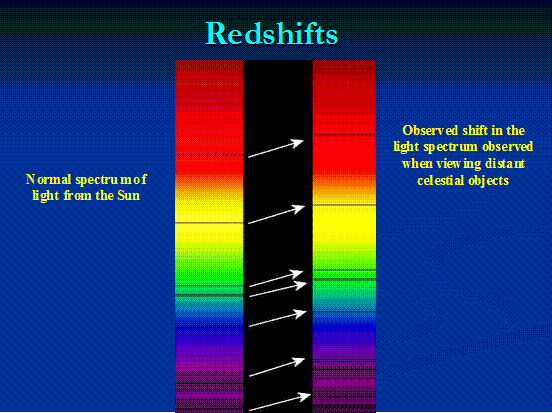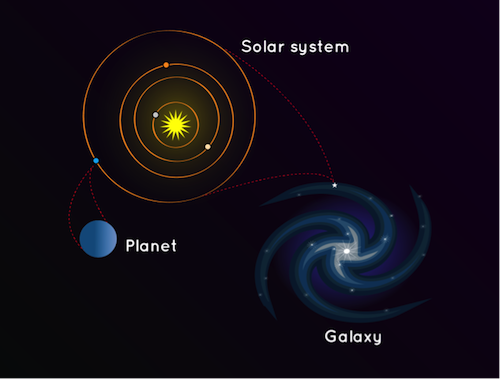Science & Technology
Narrow-Line Seyfert 1 (NLS1): Farthest Gamma-Ray Emitting Galaxy
- 15 Apr 2021
- 8 min read
Why in News
Recently, Astronomers have discovered a new active galaxy called Narrow-Line Seyfert 1 (NLS1) which has been identified as the farthest gamma-ray emitting galaxy.
Key Points
- The Study:
- Scientists from Aryabhatta Research Institute of Observational Sciences (ARIES) in collaboration with researchers from other institutions, studied around 25,000 luminous Active Galactic Nuclei (AGN) from the Sloan Digital Sky Survey (SDSS).
- AGN are the most powerful, long-lived objects and steady sources of luminosity in the Universe. The emission is spread widely across the electromagnetic spectrum, often peaking in the Ultra-Violet , but with significant luminosity in the x-ray and infrared bands.
- SDSS is a major multi-spectral imaging and spectroscopic redshift survey using a dedicated 2.5-m wide-angle optical telescope at Apache Point Observatory in New Mexico, United States.
- It has created the most detailed three-dimensional maps of the Universe ever made, with deep multi-color images of one third of the sky, and spectra for more than three million astronomical objects.
- Scientists from Aryabhatta Research Institute of Observational Sciences (ARIES) in collaboration with researchers from other institutions, studied around 25,000 luminous Active Galactic Nuclei (AGN) from the Sloan Digital Sky Survey (SDSS).
- Findings:
- They found a unique object that emits high-energy gamma rays located at a high redshift (more than 1)
- It was identified as a gamma-ray emitting NLS1 galaxy, which is a rare entity in space.
- The new gamma-ray emitting NLS1 was formed when the Universe was only about 4.7 billion years old as compared to its current age of about 13.8 billion years.
- They found a unique object that emits high-energy gamma rays located at a high redshift (more than 1)
Redshift
- About:
- It is the displacement of spectral lines towards longer wavelengths (the red end of the spectrum) in radiation from distant galaxies and celestial objects.
- It reveals how an object is moving in space and enables astronomers to discover otherwise-invisible planets and the movements of galaxies, and to uncover the beginnings of our universe.
- Significance:
- Astronomers use redshifts to measure how the universe is expanding, and thus to determine the distance to our universe’s most distant (and therefore oldest) objects.
- Measurement:
- The most accurate way to measure redshift is by using spectroscopy.
- When a beam of white light strikes a triangular prism it is separated into its various components (ROYGBIV). This is known as a spectrum (plural: spectra).
- Astronomers can look at the spectra created by different elements and compare these with the spectra of stars. If the absorption or emission lines they see in the star's spectra are shifted, they know the object is moving either towards us or away from us.
- The most accurate way to measure redshift is by using spectroscopy.
- Astronomers calculate redshift in terms of the redshift parameter (z) which helps in calculating the distance of the object (galaxy,planet etc).
- With increasing value of z the distance of the object increases.
- Instrument Used:
- The scientists used the Japanese 8.2 m Subaru Telescope which is one of the largest ground-based telescopes in the world, located at Hawaii, USA.
- Its powerful light collecting capability can capture weak light from celestial objects. A major feature of the Subaru Telescope is that its prime focus boasts an overwhelming wide field of view compared to other large telescopes
- Significance:
- Detection of gamma-ray emission from NLS1 challenges the idea of how relativistic jets are formed because NLS1s are a unique class of AGN that are powered by black holes of low mass and hosted in spiral galaxies.
- Relativistic Jets:
- Supermassive black holes in the centers of some active galaxies that create powerful jets of radiation and particles travelling close to the speed of light are called relativistic jets.
- These jets are believed to be the sources of the fastest-travelling particles in the Universe that are cosmic rays.
- Relativistic Jets:
- No method was present till date to find NLS1 at redshifts larger than one.
- This discovery opens up a new way to find gamma-ray emitting NLS1 galaxies in the early Universe.
- Detection of gamma-ray emission from NLS1 challenges the idea of how relativistic jets are formed because NLS1s are a unique class of AGN that are powered by black holes of low mass and hosted in spiral galaxies.
Aryabhatta Research Institute of Observational Sciences
- ARIES is one of the leading research Institutes which specializes in observational Astronomy & Astrophysics and Atmospheric Sciences situated in Nainital, Uttarakhand.
- It was established in 1955 and its primary objective has been to develop facilities for modern astrophysical research in stellar, solar & theoretical branches of astrophysics. On some selected clear nights the visitors are also shown some celestial objects through the telescopes.
Galaxy
- A galaxy is a huge collection of gas, dust, and billions of stars and their solar systems, all held together by gravity.
- Earth is the part of the Milky Way Galaxy, which also has a super Massive Blackhole in the middle.
Black Hole
- It refers to a point in space where the matter is so compressed as to create a gravity field from which even light cannot escape.
- The concept was theorized by Albert Einstein in 1915 and the term ‘black hole’ was coined in the mid-1960s by American physicist John Archibald Wheeler.
- All the black holes observed so far belong to two categories:
- One category ranges between a few solar masses and tens of solar masses. These are thought to form when massive stars die.
- The other category is of supermassive black holes. These range from hundreds of thousands to billions of times that of the sun from the Solar system to which Earth belongs.
Gamma Ray Astronomy
- It is the study of astronomical objects and phenomena that emit gamma rays. Gamma-ray telescopes are designed to observe high-energy astrophysical systems.
- As Earth’s atmosphere blocks most gamma rays, observations are generally conducted by high-altitude balloons or spacecraft.
- Gamma-ray astronomy presents unique opportunities to explore exotic objects. By exploring the universe at these high energies, scientists can search for new physics, testing theories and performing experiments which are not possible in earth-bound laboratories.








